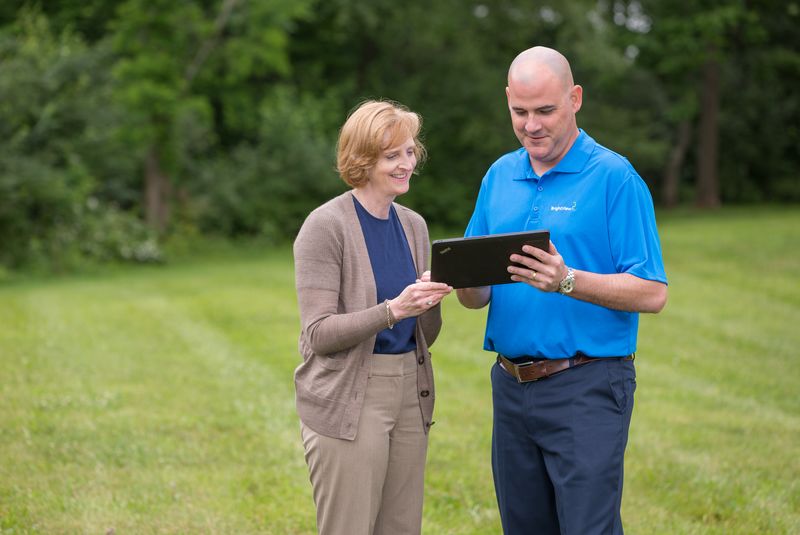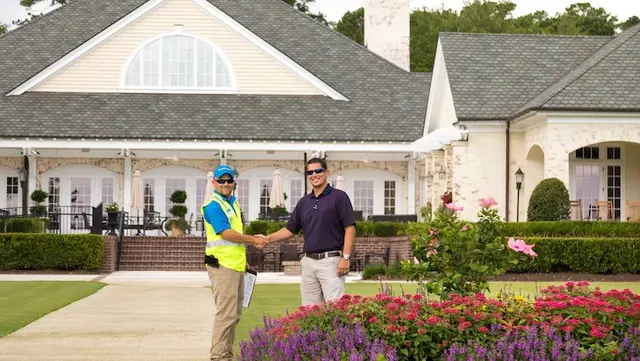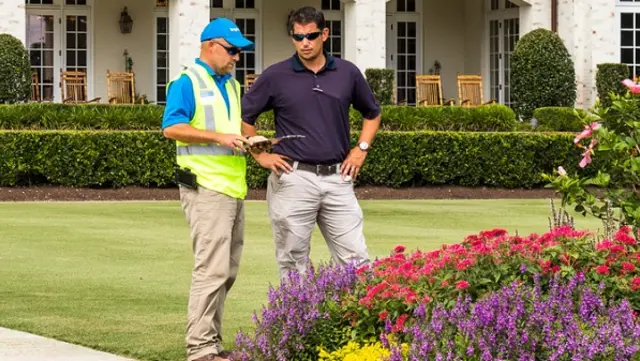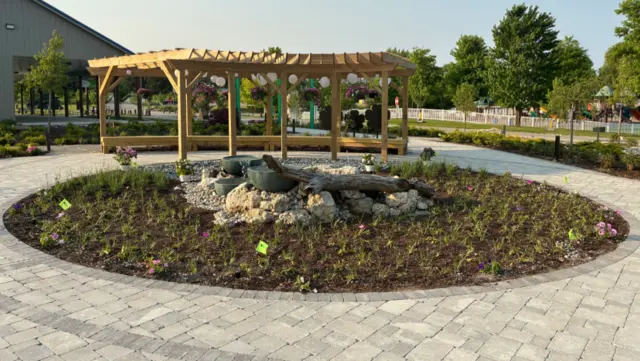
How to Stay in Lockstep with Your Landscape Partner
These are the Ingredients for Successful Communication
We’re all familiar with the break-up refrain, “It’s not you. It’s me.” But when it comes to breaking up with a service partner, frequently, the inverse is true. Why doesn’t it work out? There are some common threads. Let’s take a look at the reasons landscape partners fall short and how we prevent them at BrightView.
Set Clear Standards for Quality
Every person defines quality differently. While some horticultural practices guide the performance of certain services, many others require clarification on the part of the client. One example of this is the preference for the shape of your boxwoods or deciding on what a particular grass length should be. Then there are your goals—whether it’s providing shade for a communal area, or lowering your water bill. These are just some of the things that shape an individual perception of quality.
That’s why it’s important for your landscape partner to frequently check-in with you at regular intervals to ensure you’re on the same page about what constitutes a job well done. And, notice we said regularly, not just at the beginning of your contract. That’s because preferences and goals change over time, so too should your landscape management plan.
At BrightView, we stay aligned with our clients’ expectations through our Quality Site Assessments. These regular meetings offer an opportunity to check-in and evaluate the progress of your landscape together. Based on your feedback, we make the necessary adjustments to ensure you’re receiving service that helps you meet your goals.
Create a Pathway for Direct Communication

Are you waiting on pins and needles for a reply from your landscape partner? Do you wonder if your voicemail vanished and all the subsequent emails got lost in cyberspace? We’ll go out on a limb and guess a technical glitch isn’t the reason for the lack of response.
There’s no excuse for poor communication. It’s not too much to expect a timely response, or even a proactive update on the status of a request. When it comes to taking good care of your clients, that’s just table stakes.
There’s no excuse for poor communication. It’s reasonable to expect timely responses or proactive updates regarding requests. When it comes to taking good care of your clients, that’s just table stakes, that’s why we created BrightView HOA Connect. BrightView HOA Connect is an online portal that makes it easy for you and your residents to submit and track service requests, view planned maintenance, manage community news, and much more! The portal facilitates real-time, direct communication that keeps everyone on the same page.
Have Your Landscape Partner Walk in Your Shoes
Ok, not literally. What we mean is, your landscape partner should be sensitive to seeing your property and concerns from your perspective. Regular property walks should be the rule, not the exception. It’s is the most effective way for a landscape partner to “see what you’re seeing.” At BrightView, property walks are a vital part of our Quality Site Assessment process, as well as our regularly scheduled client check-ins.
Another key to success is adopting a policy of transparency and collaboration. Your landscape partner should endeavor to understand your unique concerns or sensitivities, such as community quiet hours, when building your landscape management plan. For example, we work hand-in-hand with our clients to develop the service schedule for their property together and submit the proposal for review before the schedule we implement it. By doing so, we ensure that the resulting schedule is tailored around your employee and visitor schedules and designed to cause minimal disruption.
If you’ve been wondering whether it’s time to move on from your landscape partner, the answer is probably yes. Break-ups are hard, but the right landscape partner can make the transition painless, which reminds us of another familiar break-up refrain:
“You can do so much better!” In this case, it couldn’t be more accurate.



